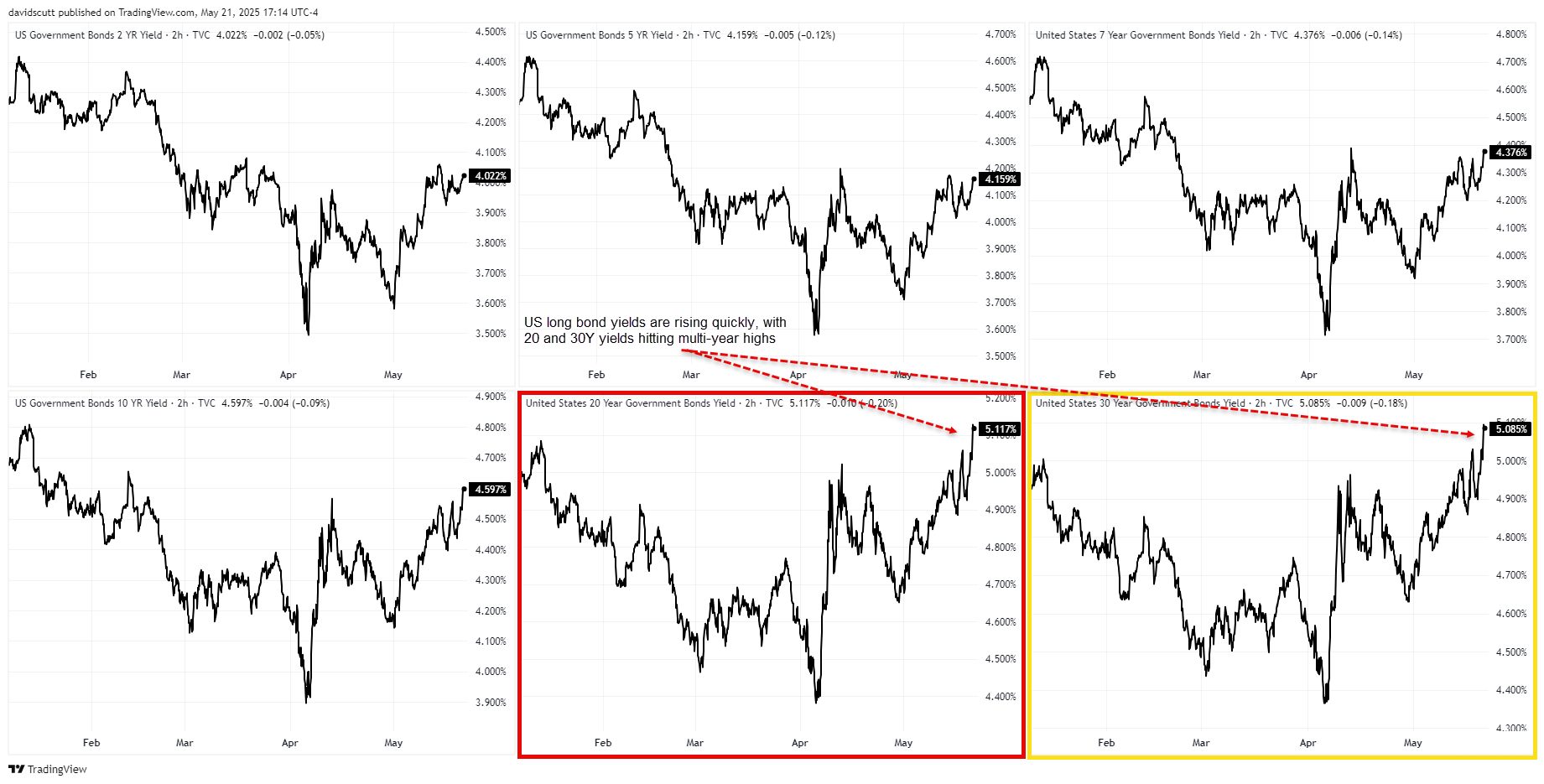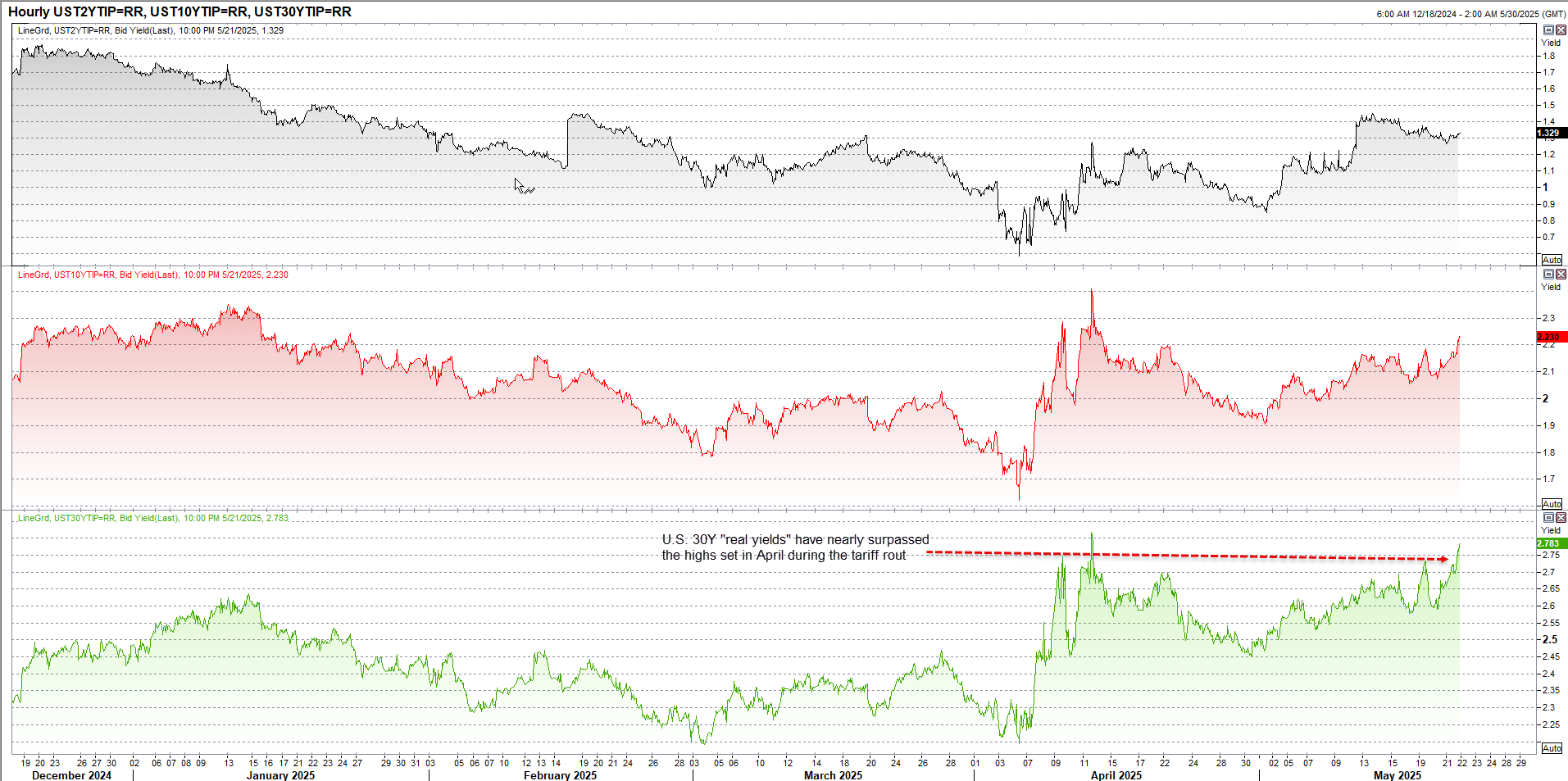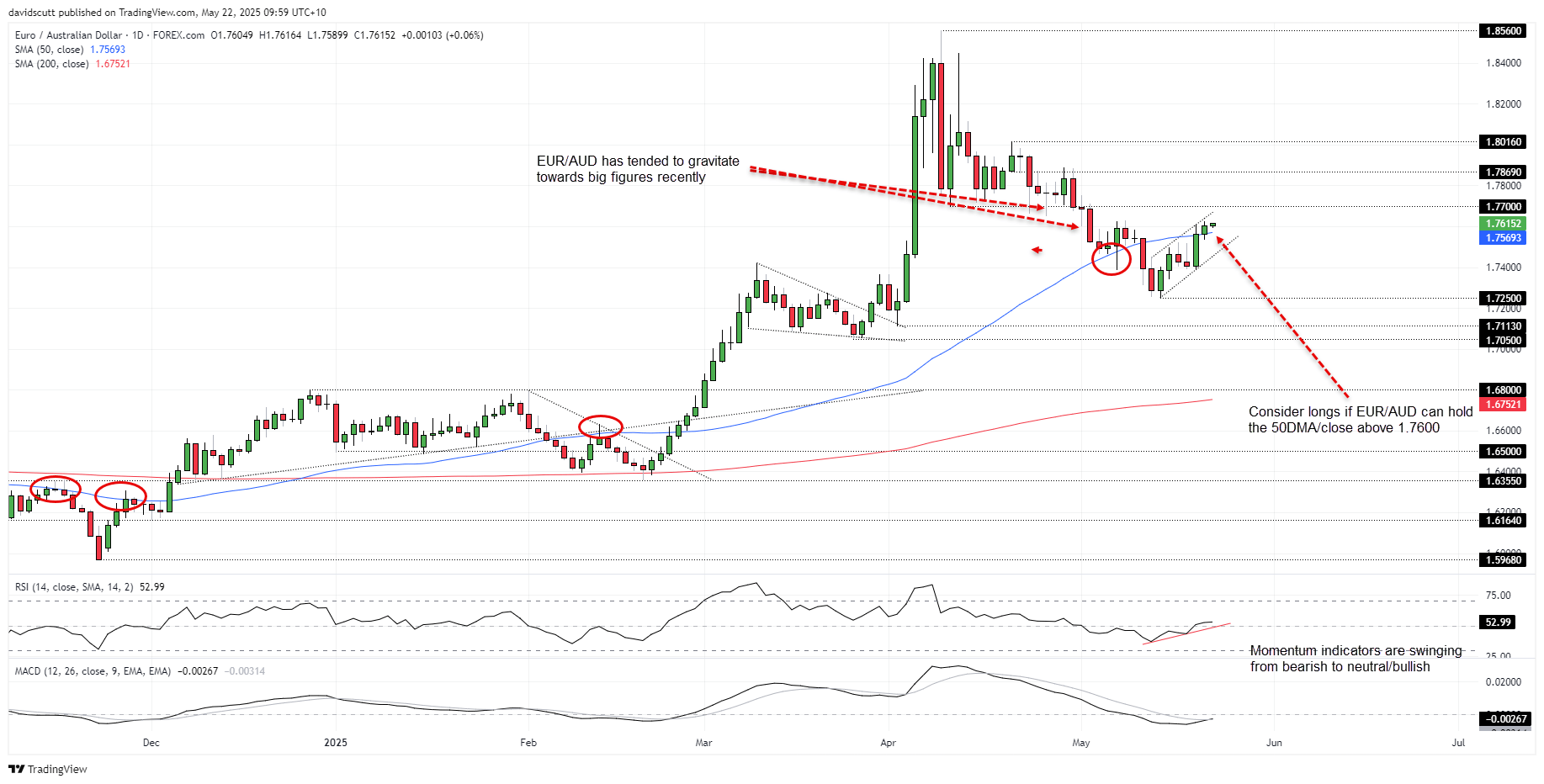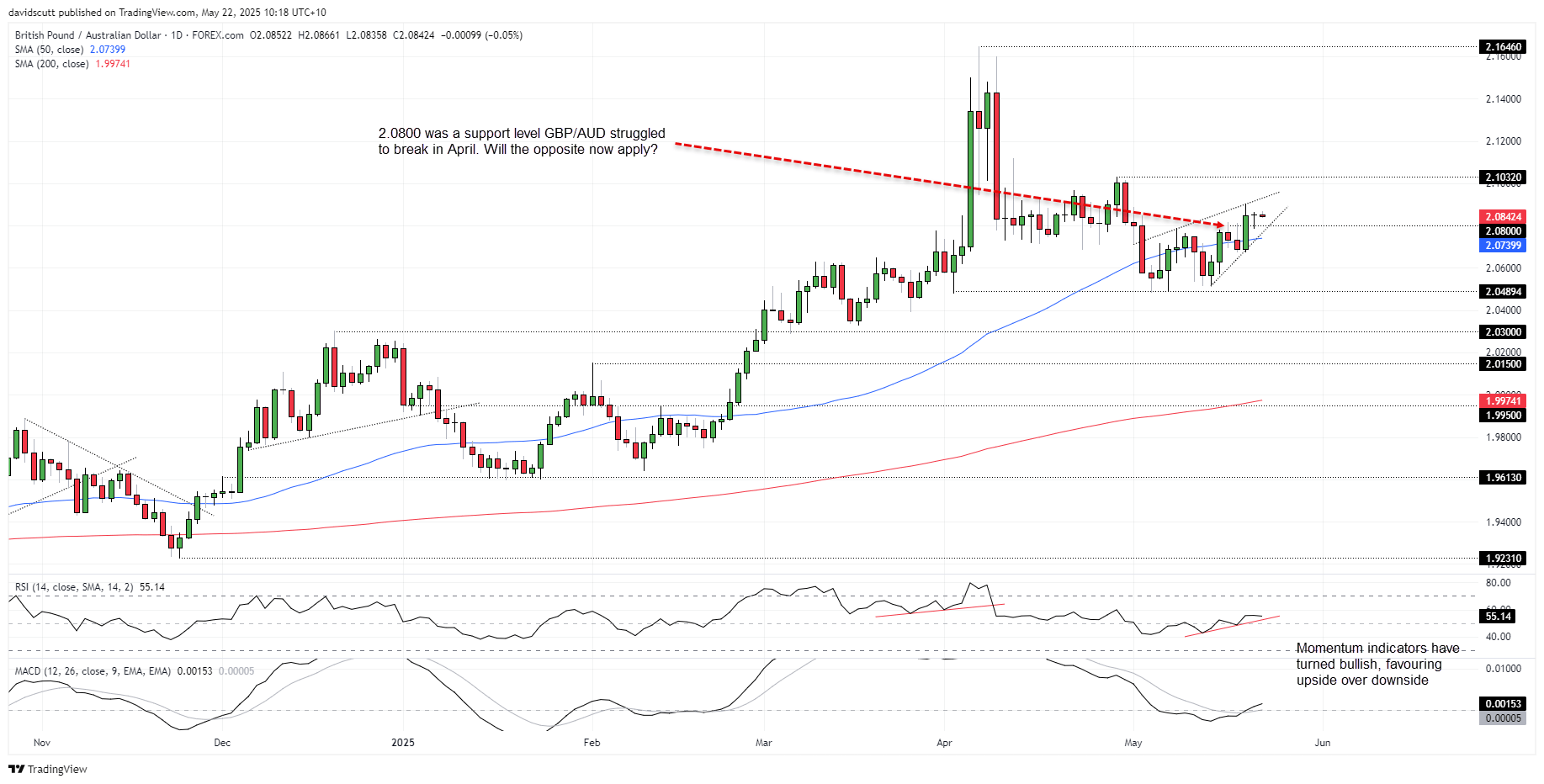Adaptimmune stock plunges after announcing Nasdaq delisting plans
- Long-end bonds hit as real yields surge
- Fiscal concerns driving the latest bond selloff
- Risk sentiment weakening but not yet fully pricing damage
- AUD under pressure, but other FX setups look cleaner
Bond Rout Risks Market Turmoil
Long bonds are being beaten up around the world, led by US Treasuries and Japanese JGBs, the two largest debt markets globally. Yields are surging—and not for good reasons. Riskier asset classes with nosebleed valuations are yet to truly reflect the carnage in “risk-free” rates, although late losses on Wall Street suggest investors are starting to catch on that the focus is no longer about trade deals.
You can see how US Treasury yields with maturities greater than 10-years have surged over the past few weeks, with 20-year and 30-year tenors hitting levels not seen since the second half of 2023 when the Federal Reserve was talking about increasing interest rates.
Source: TradingView
However, rather than being driven by inflation concerns as was the case back then, this time the rise reflects other factors. Real yields—which strip out inflation expectations from nominal bond yields—have jumped this week, sending 30-year real yields within touching distance of multi-decade highs. While bond yields reflect more than just inflation risks, it’s clear this rout is being driven by growing concerns about the U.S. fiscal trajectory.
Source: Refinitiv
The higher borrowing costs go for the US government, the higher they’ll be for the private sector. And the higher yields on risk-free assets go, the more pressure it will put on other asset classes further out the risk spectrum.
AUD Vulnerable to Risk-Off Episode
Given the tricky environment, the Australian dollar may struggle. But with the US dollar on the nose with investors, short AUD/USD setups may not deliver the kind of downside traders have become used to during major risk-off episodes. For those wanting to position for potential turbulence, stronger setups may come from long EUR/AUD and GBP/USD trades.
EUR/AUD Recovers 50DMA
Source: TradingView
EUR/AUD finds itself in a bear flag pattern on the daily timeframe, warning that the recent bounce could give way to a resumption of the prior bearish trend. However, as long as the price holds above the 50-day moving average, bullish setups remain favoured, especially with momentum indicators now shifting from bearish to neutral-bullish.
Longs could be considered on moves towards the 50DMA, with a stop beneath for protection. One thing that stands out on the EUR/AUD chart is the messy price action around big figures recently, with many probes but only a few sticking. With the price currently trading above 1.7600, it may pay to wait and see if it can close above that level before entering bullish positions.
Given the gravitational pull of round numbers, 1.7700 and 1.8000 screen as logical targets, with 1.7869 also a possibility given how the pair traded around that level during April. A sustained close below the 50DMA may warrant looking at other, cleaner setups.
GBP/USD Bulls Gaining Control
Source: TradingView
GBP/AUD has something for both bulls and bears right now. It hit multi-week highs earlier this week while still holding inside a rising wedge. But having cleared the 50DMA and delivered a bullish engulfing candle on Tuesday, the pair now trades above 2.08—a level it repeatedly failed to break convincingly below in April.
Now that it’s above, the opposite may apply. Throw in bullish momentum signals and upward-sloping 50- and 200-day moving averages, and the backdrop leans towards further upside rather than a resumption of the bearish trend from April.
Longs could be established above 2.0800 with a stop beneath. Wedge resistance sits around 2.0920 today, making it an obvious initial target. If that breaks, the rally could extend toward the April 29 high of 2.1032. A sustained move back below 2.08 would invalidate the near-term bullish bias.
